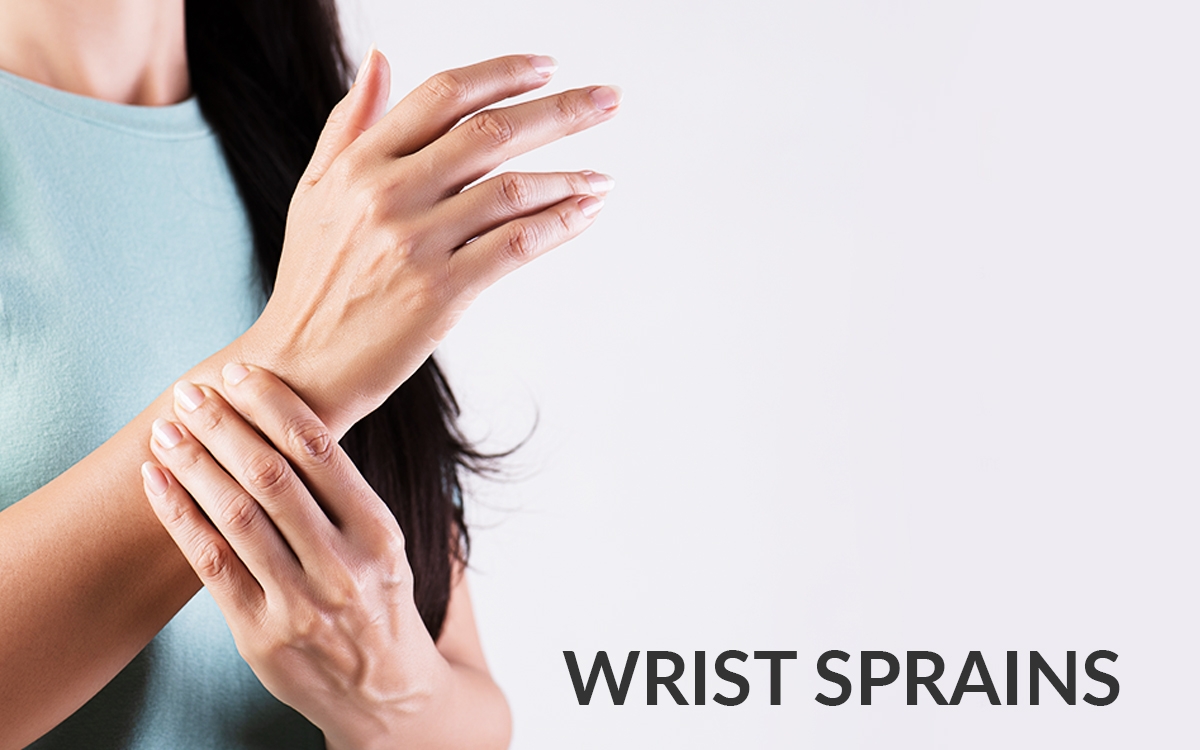
Summary
Causes
- Falling on an outstretched wrist
- Bending of wrist in an awkward way
- While playing sports
Symptoms
- Tingling at the site of the sprain
- Bruising
- Tenderness and feeling of warmth
What needs to be done?
- Keep your hand elevated to minimise swelling
- Bend and straighten your elbow, fingers and shoulder regularly to maintain the movement.
- Use ice wrapped in a towel for ten minutes to reduce swelling and pain
- Take painkillers
- Wear a supportive bandage
What is a Wrist Sprain?
Wrist Sprain happens when the ligaments that support the wrist stretch beyond their limits or have a tear. This happens most commonly when a person falls onto an outstretched wrist and hand or if the wrist is bent in an awkward way.
Ligaments are essentially strong fibrous tissues which connect bones to other bones. Depending on the grade of injury to the ligaments the sprain can be mild, moderate or severe.
In a mild sprain, ligaments are only stretched. In a moderate sprain, ligaments will be partly torn and in a severe sprain, ligaments are completely torn and may need surgery.
What is the cause of Wrist Sprain?
It can happen during day to day activities when someone falls onto an outstretched hand. It can also happen whilst playing sports.
What are the symptoms of a Wrist Sprain?
The symptoms include tingling at the site of the sprain, bruising, tenderness and the feeling of warmth. Remember sometimes a fracture can be mistaken for a sprain also. For example most commonly we see an occult fracture of the scaphoid being confused with a wrist sprain.
If you have any of the above symptoms and they do not improve quickly it is important to see your doctor for a clinical examination, investigation and further
management.
If a wrist injury is missed or not treated properly it can lead to long term complications like arthritis, stiffness or chronic pain.
What will happen when I see my doctor?
Your doctor will ask for the mechanism of the injury and do a clinical examination and look for the above symptoms. He can then order x-rays or other investigations like a MRI Scan or a CT scan.
What should I do if I have a Wrist Sprain?
Keep your hand elevated to minimise swelling. Bend and straighten your elbow regularly to maintain the movement. Similarly bend your fingers to maintain movement and do the same with the shoulder.
You can use ice wrapped in a towel for ten minutes to reduce swelling and to help with the pain. Do not put ice straight on to the skin as it may cause ice burns. Take painkillers. Wear a supportive bandage.
If the pain in your wrist doesn’t settle within a few days then make an appointment with your doctor.
What does the treatment involve?
Treatment depends on the severity of the sprain. For mild wrist sprains, rest, supportive bandages, elevation, ice and painkillers will help.
For moderate pain immobilise for a few weeks in a splint or a plaster.
For severe sprains surgery may be needed followed by immobilisation in a plaster for up to six weeks and then rehabilitation.
How to prevent a Wrist Sprain?
As wrist sprains commonly happen after a fall on to an outstretched hand be careful when walking on a wet or a slippery surface. You can wear wrist guards or protective bandages whilst playing sports.
BMI Chelsfield Park Hospital
Bucks Cross Road Chelsfield ORPINGTON BR6 7RG
01689 877855
BMI The Blackheath Hospital
40-42 Lee Terrace Blackheath LONDON SE3 9UD
020 8318 7722
BMI The Sloane Hospital
125 Albemarle Road BECKENHAM BR3 5HS
020 8466 4000
Princess Royal University Hospital
Farnborough Common ORPINGTON BR6 8ND
01689 863223



